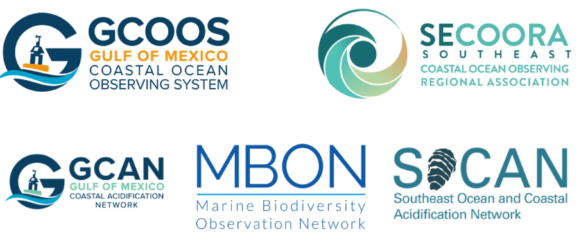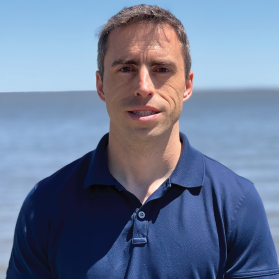
Join SECOORA for a webinar titled “Applying technology to improve our ability to forecast, observe and detect rip currents” on June 22 at noon ET presented by Greg Dusek, NOAA National Ocean Service, and Alex Pang, University of California Santa Cruz.
The pair will present on the new NOAA rip current model and how machine learning and flow analysis methods are used to identify rip currents. Click here to reserve your spot.
Rip currents are responsible for 80% of beach rescues and approximately 100 deaths each year. They are as dangerous as they are difficult to detect or predict.
NOAA has released the first ever national rip current model to provide critical beach safety information to beach-goers across the country. The machine learning model predicts the future likelihood of hazardous rip currents more accurately than previous prediction approaches and offers hourly predictions, every kilometer alongshore, up to six days in advance.
A UC Santa Cruz and NOAA team is investigating remote optical technologies for detecting rip currents from images and video streams. Approaches using both machine learning methods and optical flow analysis methods are applied to detect rip currents in realtime. Hybrid approaches are also being investigated.
This webinar will provide an overview of the new NOAA rip current model and how machine learning and flow analysis methods are used to identify rip currents.
Click here to reserve your spot for the webinar on June 22 at noon ET.
Click here to download the flyer.
Meet the Presenters
Greg Dusek is a physical oceanographer and the Chief Scientist for the NOAA National Ocean Service (NOS) Center for Operational Oceanographic Products and Services (CO-OPS). He also serves as the NOS lead for Artificial Intelligence (AI) and as the chair of the NOAA AI Executive Committee. Greg has studied rip currents and beach hazards for over 15 years and his research broadly focuses on coastal oceanographic product development through the intersection of data science with coastal hazards. Greg has been at NOAA for about 10 years, and prior to serving as Chief Scientist, he was an oceanographer on the currents team where he led a range of physical oceanographic projects. Greg completed his PhD in physical oceanography at the University of North Carolina Chapel Hill where he studied coastal processes and rip currents.
Alex Pang is a Professor of Computer Science and Engineering at University of California Santa Cruz. He received his PhD in Computer Science from UCLA in 1990, and his BS in Industrial Engineering from University of the Philippines with magna cum laude in 1981. His research interests are primarily in scientific visualization with focus on uncertainty and flow visualization. More recently, his research interest are in applying and developing technology for the benefit of society with applications such as rip current detection, search and rescue aids, physics inspired ML based wildfire modeling, and tools for first responders of mass shootings. He has served as an associate editor for the IEEE Transactions on Visualization and Computer Graphics and co-chaired the IEEE Visualization conference.
Related news

GCOOS - SECOORA Joint Webinar Series: Building Synergy Across the US MBON & Ocean Acidification Networks
The GCOOS - SECOORA Webinar Series aims to strengthen collaborations across the Marine Biodiversity Observation Network (MBON) and regional Ocean Acidification Networks (GCAN and SOCAN).

New High Frequency Radar at the Dry Tortugas National Park Improves Ocean Surface Current Measurements Across the Straits of Florida
A new CODAR Low-Power SeaSonde HFR has been deployed by the University of South Florida at Fort Jefferson on Garden Key to measure surface currents to improve understanding and prediction of the Gulf of Mexico Loop Current.

President Biden Proposes Significant Budget Cuts to IOOS for 2025
President Biden’s recent 2025 budget proposal slashed the funding allocated for the Integrated Ocean Observing System (IOOS) by 76%, which would effectively shut down coastal and ocean observing efforts.

